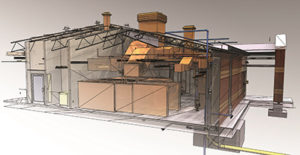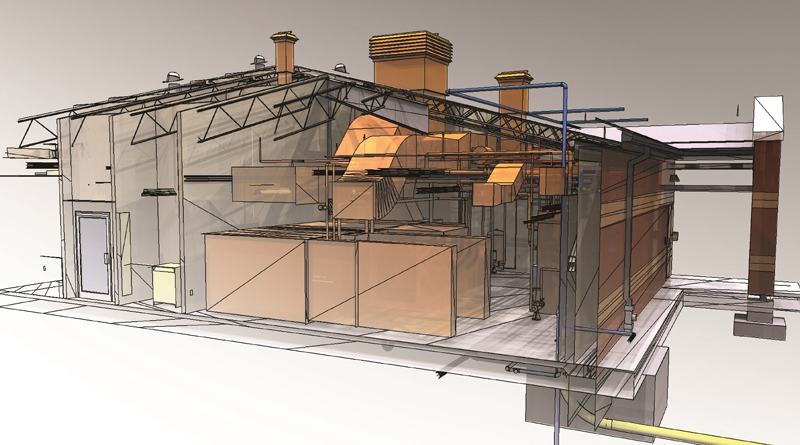School Projects Save Time & Money with 5D Macro BIM
By Todd Imming
The back of a napkin may be a famous medium for getting an idea off the ground, but when it comes to early design and pre-construction on multimillion-dollar school and university projects, it just doesn’t cut it. Thankfully, 5D Macro building information modeling (BIM) is giving the ideas of architects and designers the respect they deserve.
What Is 5D BIM?

Five-dimensional building information modeling (5D BIM) is the real-time display of fully valued parametric building components within a virtual model. It allows experienced users to create models that demonstrate how changes to materials, layouts, square footage and other design elements not only affect the appearance of a facility, but also the cost and schedule of construction (dimensions four and five). It’s a type of Macro BIM, which is a technology that allows estimators to model facilities at the earliest stages of design.
The 5D Macro BIM approach marries the artistic form of design with the strategic function of a building’s architecture and increases transparency in the process. With 5D Macro BIM, anything school and university design teams can dream up can easily be modeled and examined: creative design concepts, clever exterior finishes, innovative layouts, and uniquely shaped and aligned departments and floors in varying sizes. And expenses are clearly pegged to materials, labor or soft costs.
Here’s how 5D BIM is delivering real value for education clients:
- Visual and data modeling capabilities translate into a better understanding of project scope. Formulas drive costs on each building system based on the specific design, materials, site conditions, phasing and other parameters according to the institution’s timeline.
- The entire project team develops an understanding of the proposed design, assumptions and cost drivers. They then have a concise and accurate description of scope, cost and schedule, which directly impacts funding decisions.
- Data is provided in real time as the model is developed or changed. Alternative concepts can be easily explored, while school or university officials and the project team can see the cost and other data unfold instantaneously. This drastically shortens design and estimation cycle time. Reliable, accurate updates in real time drive efficiency.
- Databases make it possible to leverage not only historical data, but also industry experience. Using data from specific sectors is a significant advantage to institutions that place a high value on proven success.
- All major project stakeholders can visualize the end product and understand exactly what’s included in the budget. For school and university officials, transparency is crucial.
- Updating the model automatically changes the construction costs in real-time. What-ifs become productive and engaging solution missions for the entire team.
This software also allows construction firms to make faster and smarter decisions, offer a wider range of cost options and use fewer personnel during the early business assessment and design stages. When used by companies that already subscribe to a Design-Build methodology — where design and construction are housed under the same roof — the benefits are compounded. Costs from back-and-forth between the two disciplines are all but eliminated when change is realized in real time.
Todd Imming is director of marketing for The Korte Company, headquartered in Highland, Ill., and has led The Korte Company’s marketing department since joining the company in 2004.

